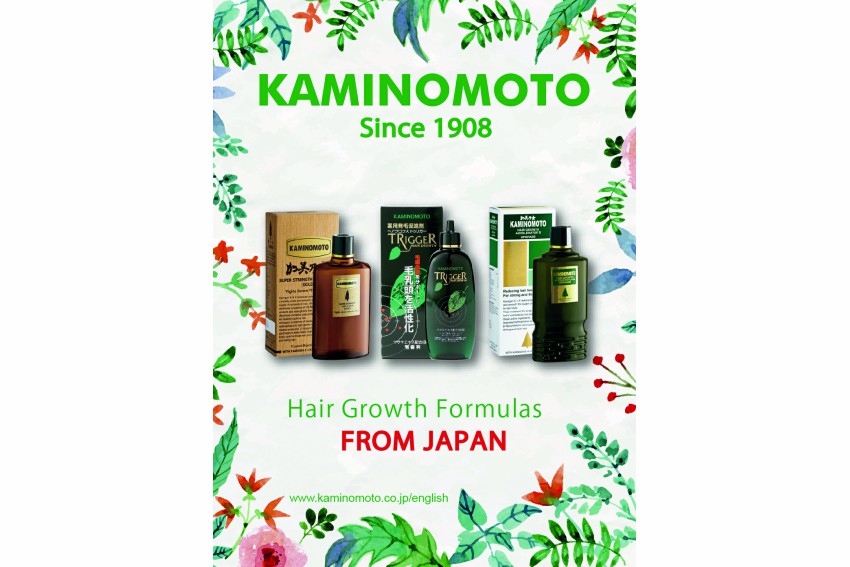Driven by growing exports and booming tourism, Japanese cosmetic firms like Kaminomoto – which develops a range of reputed hair-care products used to promote hair growth and maintain a generally healthy scalp – are leveraging on the strength of the ‘Made in Japan’ brand to grow their presence in overseas markets.

A land famed for being health and beauty-conscious, Japan is reputed for the quality of its cosmetics products. Over the coming years the nation’s cosmetics market, the second largest in the world after the U.S., is set for steady expansion buoyed by growth in exports, particularly to neighboring Asian countries where the ‘Made in Japan’ brand holds significant weight.
For the first time ever, Japan became a net exporter of cosmetic products in 2017. And in 2018, exports reached a record of more than 500 billion yen ($4.8 billion), marking a sixth consecutive year of growth. The reason for the boon in exports can mainly be attributed to the drive by Japanese cosmetics firms to expand their presence in overseas markets as a means to offset the impact of the aging and shrinking domestic market.
Although, the domestic market has recently received a timely boost from the booming tourism industry, which witnessed a record 31 million visitor arrivals in 2018. During their visit, a sizeable portion of these tourists buy Japanese cosmetics products and, later, having been convinced by their quality and benefits, continue to do so upon their return home.
“As foreigners from the four corners of the world discover the wonders of our land, they become acquainted with Japanese cosmetic brands. By establishing distribution to physical stores, we were able to grow our brand name and cater to inbound tourists,” says Norihira Nakamura, president of hair-care product maker, Kaminomoto, who goes onto explain the factors behind the quality, safety and reliability of ‘Made in Japan’ cosmetics.
“In Japan, manufacturing companies are subjected to strict production standards which closely monitor both product quality and safety. Furthermore, as our industry is closely related to the medical field, the complexity of our client-base and approval processes forces us to remain implacably reliable.”
As a century-old company, Kaminomoto’s historical expertise in ‘Kampo’ (a Japanese Oriental medicine) has allowed it to develop its unique portfolio of hair-care products used to promote hair growth, eliminate dandruff and maintain a generally healthy scalp.
In 1932, the company launched its first product, ‘Kaminomoto A’, which won the recognition of the market and has received positive customer evaluations over its 87- year history.
“Historically speaking, our bestselling product has been ‘Kaminomoto A’, a non-fragrant scalp-care product with a proven track-record of effectiveness. It is with this solution that our firm gained fame and recognition,” explains Mr. Nakamura.
“The next generation of Kaminomoto is about strengthening this product. This is a huge pillar that Kaminomoto is standing on and the main audience for this product is middle-aged men over 40.”
However, evolving market trends have prompted Kaminomoto to develop products targeted towards women. The company has successfully launched a series of medical hair restoration products for female customers, including ‘Ladies Kaminomoto EX’ and ‘Ladies Kaminomoto HQ’, the ingredients for which are strenuously developed in-house by the company’s R&D department. In fact, as Mr. Nakamura points out, it is this commitment to in-house development that sets the company apart and ensures its products are of the highest quality and reliability.
“We produce over 90 percent of our products in-house,” he explains. “From planning to product development, manufacturing, and shipping, all is managed and completed inhouse. And a management system without compromise regarding quality is in place. We believe our strength lies in the ability to complete the entire process in-house.”
Today Kaminomoto’s products are available in 44 countries, where it enjoys a strong presence. Moving forward, the company’s international growth strategy will be based around two pillars: promotion of its original Kaminomoto A product and the development and sales of new products for women in a bid to tap into a higher demand for hair-restoration solutions from female consumers across the globe.
“Presently, our main target is Southeast Asia and China. That being said, our objective is to capture as much of the global market as possible, and expose our products to the world. To execute a successful international expansion, selecting competent sales-agents with extensive local expertise is of paramount importance,” says Mr. Nakamura.
But more important than corporate strategies, his first objective will be to maintain the trust, confidence and loyalty of Kaminomoto’s client base. “I believe that a company’s success can only be judged by the satisfaction of its clients. As such, my ultimate goal is to create a corporate philosophy that holds client care as the paramount factor for development.”
0 COMMENTS